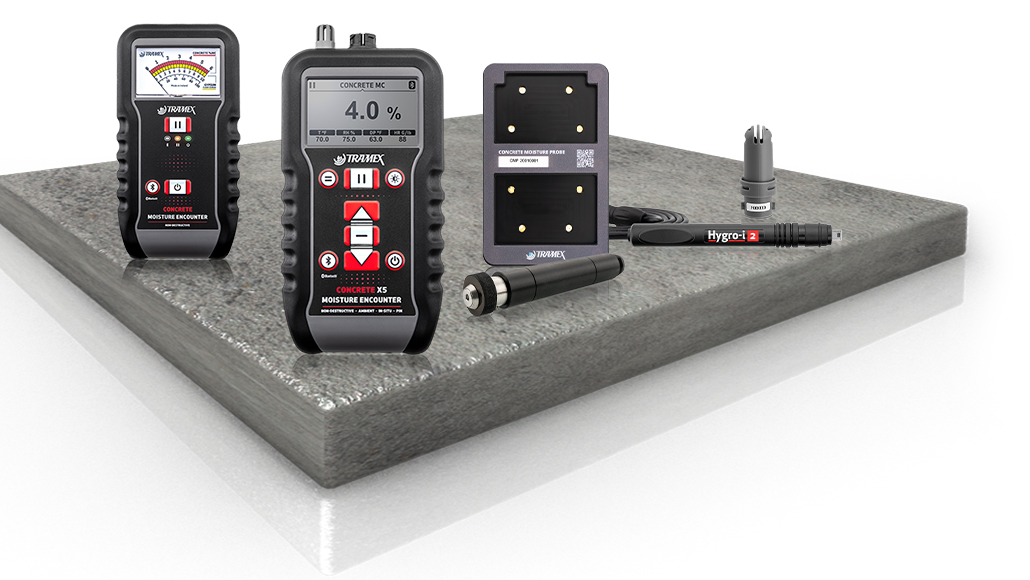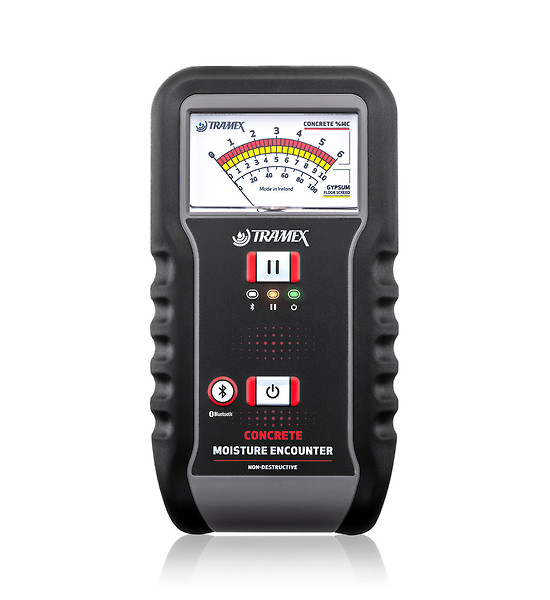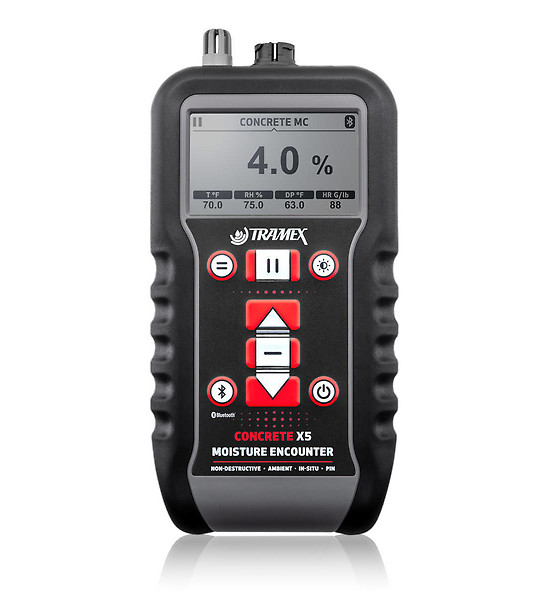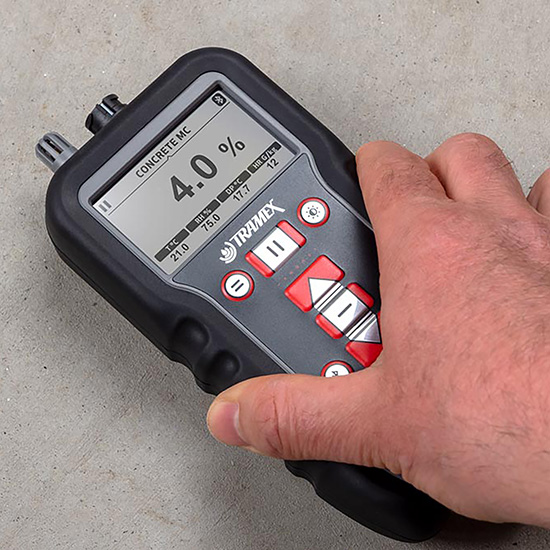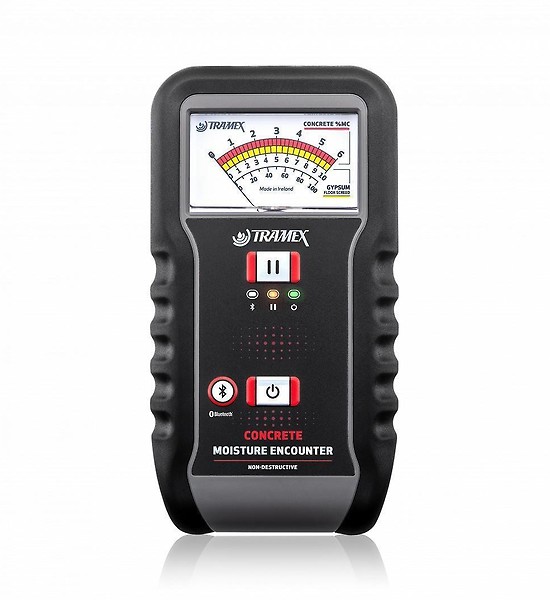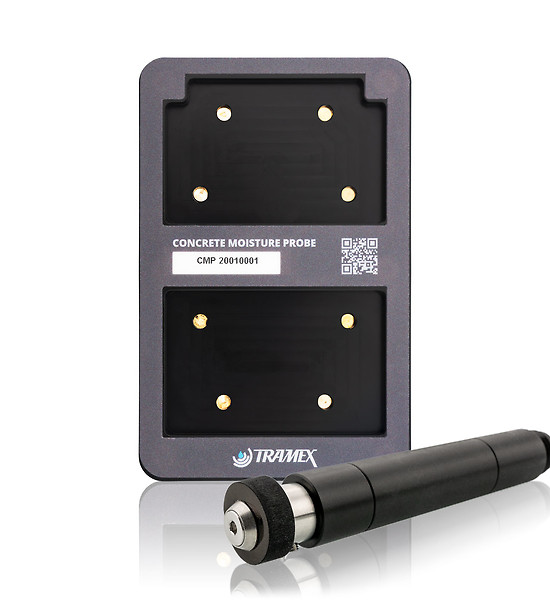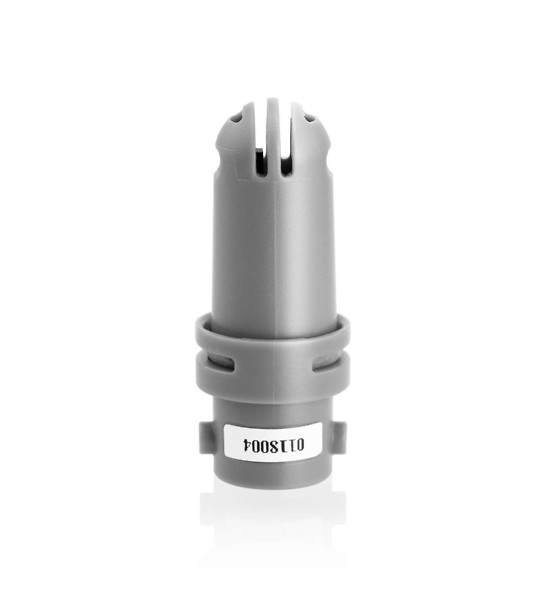How accurate are concrete moisture meters?
Moisture meters provide accurate reading as long as they are properly calibrated. The Tramex non-destructive concrete moisture meters are calibrated specifically for concrete and provide instant and precise quantitative measurement of the moisture content (%MC) of concrete.
When concrete is first placed, its moisture content by weight will be approximately 6 to 7% water, and half of that water reacts to form cement. The remaining water is chemically bound and no longer of concern for flooring installation. As such, we are essentially concerned with this 3% to 6% window to determine when the concrete is ‘dry enough’, and so precision is critical - precision that concrete moisture meters calibrated using gravimetric testing method as a baseline can provide. Only a top quality quantitative concrete moisture meter like the Tramex Concrete Moisture Encounter, the CME5 and CMEX5, provides quantitative readings of the actual moisture content in the concrete floor or slab.
The best and most accurate concrete moisture meters have been calibrated using gravimetric testing as a baseline. Gravimetric testing (the measurement of water % by weight, aka ‘the oven method’) is an industry standard moisture test in many different and diverse industries, including the wood industry, grain storage, cosmetics and pharmaceuticals. As a result, gravimetric measurement has been established as the most accurate method of measuring the moisture content of virtually anything.
Tramex CME concrete moisture meters are calibrated using gravimetric testing as a baseline. They also provide stability in use, by way of spring-loaded electrodes, giving repeatable and reliable measurements. If a moisture meter is not calibrated specifically for concrete it cannot be used to measure moisture content, and should only be used for comparative reference.
